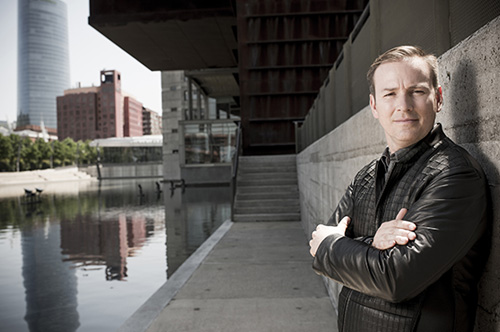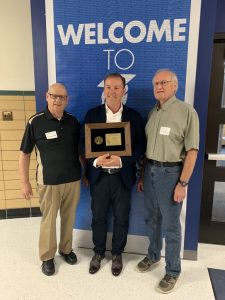Erik Nielsen
Chief Conductor of the Bilbao Symphony Orchestra

Erik Nielsen, Conductor
Bilbao Symphony Orchestra
Erik Nielsen has studied and conducted all over the world. Nielsen attended Sumner Academy of Arts and Science in Kansas City, Kan. and played the oboe and harp in Youth Symphony from 1988-1995. He studied harp at Juilliard School, and conducted at Curtis Institute of Music, Philadelphia. He was Kapellmeister of Frankfurt Opera from 2008 to 2012, and was appointed chief conductor of the Bilbao Symphony Orchestra in 2015.
What Kansas City high school did you attend and when were you involved in Youth Symphony of Kansas City?
I attended the Sumner Academy of Arts and Science in Kansas City, Kansas and was part of Youth Symphony from 1988-1995 on oboe and harp.
What did you do in the five years after high school graduation?
During the five years after graduation I went to The Juilliard School, where I did my undergraduate degree (B.M.) in oboe and harp performance (1995-1999). After Juilliard, I went to the Curtis Institute of Music for two years where I studied conducting (1999-2001).
Erik Nielsen receiving his KSHSAA Hall of Fame plaque with former Sumner Academy teachers Bill Leafblad and former YSKC conductor Larry Williams.
How did you end up in Europe?

When I studied at Juilliard, I played in a harp masterclass for Marie-Pierre Langlamet, the principal harpist of the Berlin Philharmonic. She encouraged me to audition for the position in the Berlin Philharmonic’s “Karajan Academy,” which is a two-year training program, allowing post-graduate students to play in the Berlin Philharmonic. (Two of every orchestral instrument are taken except for one harp and one tuba.) Karajan felt that a music graduate still wouldn’t be ready to join the Berlin Philharmonic, but the Philharmonic’s musicians themselves could train a select group to pass on their knowledge of orchestral playing. Many of the members of the Karajan Academy join the Berlin Philharmonic after an audition, assuming a position opens up, or they join other orchestras after the training.
I auditioned for the Academy in Berlin in 1999 but had already just been accepted for the Curtis Institute’s conducting program. Marie-Pierre, who herself studied at Curtis, encouraged me to go there for two years to study conducting and two years later, she offered me the Academy position. On July 1, 2001 I moved to Berlin.
What are some difference playing and/or conducting with European orchestras versus American orchestras?
An American orchestra has a rhythmic precision, so that the conductor’s gesture is very much immediate and in sync with the players. A European orchestra, particularly of the German-speaking variety, works more like a chamber ensemble. The conductor gives a gesture, but the musicians might wait for another voice similar to being in a string quartet, making the gesture’s meaning less about precision and more about sound. For example, when playing next to Marie-Pierre Langlamet, she asked me once, “Who are you listening to?” I said, “the cellos.” She said, “I’m listening to the trombones.” So from then on, for that passage, I listened to the trombones! It was never a question of watching the conductor.
Although quite a mystery at the start, in the end, a European orchestra does function very organically, and in the best cases as a true collective.
How did YSKC play a role in your musical career?
I played lots of the core symphonic repertoire, like Brahms’ Frist Symphony, Rimsky-Korsakov Scheherazade, Beethoven’s 7, etc. as principal oboe. I had the best seat, right in the middle of the orchestra. One hears every voice of the orchestra from the center. The violas are out of tune, the 2nd bassoon is too soft, the trumpet is early, etc. Playing in the orchestra every week became a kind of imaginary rehearsal for me as a conductor.
Can you describe in detail one of your favorite YSKC memories?
I always enjoyed the start-up camps at the beginning of the season, often over the Labor Day Weekend. “Who was new? Who was returning?”
The Youth Symphony did a tour of Spain, and one stop was at the EXPO 92 (1992 in Seville, Spain). I happened to be working in Seville last summer and took a walk around the EXPO. It is a ghost town and the whole area is behind chain-linked fences, like out of a disaster film! We had many fine concerts on that tour and I remember one concert in a church, when we played in tennis shoes, because our concert shoes went briefly missing. The orchestra played a very good concert in Valencia (Beethoven’s Egmont Overture and “Dvořák’sNew World Symphony). I remember having a very good reed for that concert.
Instrument Played:
Oboe and Harp
Involvement with YSKC
1988-1995